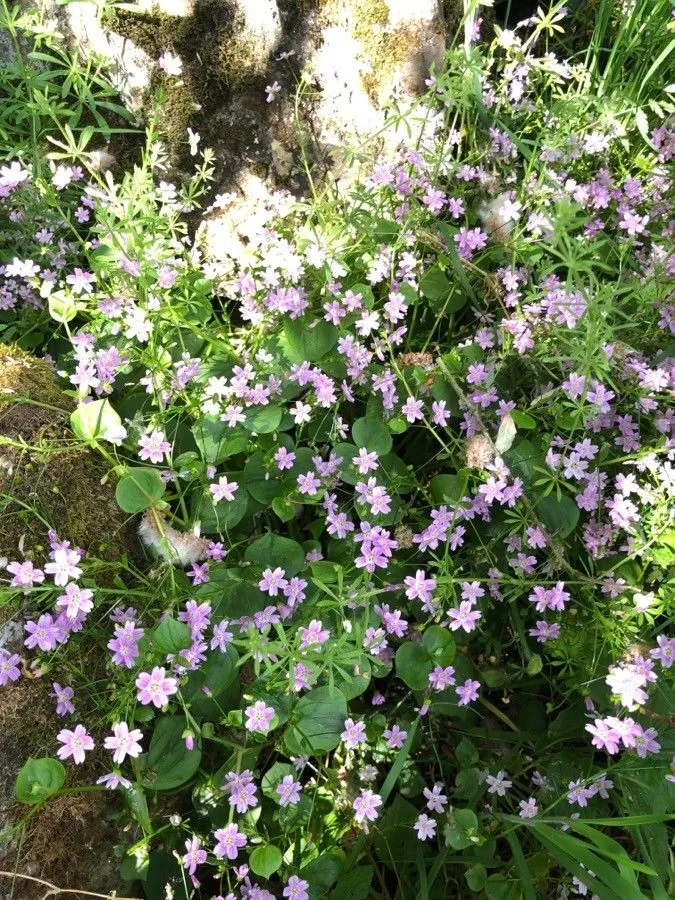
Author: L.
Bibliography: Sp. Pl.: 204 (1753)
Year: 1753
Status: accepted
Rank: species
Genus: Claytonia
Vegetable: Unknown
Observations: Komandor Is. to W. U.S.A.
Candy-flower, scientifically known as Claytonia sibirica, is an enchanting plant species that belongs to the Montiaceae family. This delightful plant has been captivating the hearts of botanists and nature enthusiasts since its first description by the renowned botanist Carl Linnaeus in his seminal work “Species Plantarum” in 1753.
Claytonia sibirica, or Candy-flower, thrives in the diverse and picturesque environments ranging from the Komandor Islands to the western regions of the United States of America. It is well-known for its distinctive and charming floral characteristics which can easily capture the attention of anyone passing by.
The Candy-flower typically exhibits delicate, five-petaled blossoms that are usually white or pale pink, often adorned with darker pink veins that offer a striking contrast. These flowers, appearing in late spring to early summer, create a delicate and beautiful display against the plant’s lush green foliage.
Growing primarily in shaded, moist areas such as woodlands, the Candy-flower’s habitat preferences contribute to its ethereal and tranquil presence in the undergrowth. This environment provides the rich organic soil and consistent moisture that Claytonia sibirica favors, allowing it to flourish under the canopy of larger trees.
The leaves of the Candy-flower are another notable feature; they are smooth, succulent, and often spatula-shaped, offering a lush green backdrop to the delicate blossoms. These leaves are not just attractive but play a crucial role in the plant’s survival, efficiently storing water to sustain the plant through varying conditions.
Candy-flower’s ability to adapt to different climates within its range, from coastal areas to mountainous regions, speaks to its resilient and versatile nature. Whether found in pristine wilderness or cultivated in garden settings, Claytonia sibirica adds an element of grace and subtle beauty to the landscape.
In summary, the Candy-flower or Claytonia sibirica is a beautiful and resilient plant species that continues to be celebrated for its delicate flowers and lush foliage. Its presence from the Komandor Islands to the western United States offers a glimpse into the natural beauty and adaptability of this enduring member of the Montiaceae family.
Fra: claytonia de sibérie, claytonie de sibérie, montia de sibérie
Eng: pink purslane, siberian springbeauty, candy-flower, pink-purslane, siberian spring beauty, siberian miner’s-lettuce, candyflower
Nld: roze winterpostelein
Deu: sibirisches quellenkraut, sibirisches tellerkraut
Dan: sibirisk vinterportulak
Ces: batolka pta
Swe: vårsköna
Cym: gwlyddyn rhudd, porpin pinc
En: Candy-flower, Pink-purslane, Siberian springbeauty, Pink Purslane, Siberian spring beauty, Siberian miner’s-lettuce, Candyflower
Cs: Batolka pta
Da: Sibirisk vinterportulak
Nl: Roze winterpostelein
Fr: Claytonia de Sibérie, Claytonie de Sibérie, Montia de Sibérie
De: Sibirisches Quellenkraut, Sibirisches Tellerkraut, Portulakgewächse
Sv: Vårsköna
Cy: Gwlyddyn Rhudd, Porpin Pinc
© copyright of the Board of Trustees of the Royal Botanic Gardens, Kew.
© copyright of the Board of Trustees of the Royal Botanic Gardens, Kew.
© copyright of the Board of Trustees of the Royal Botanic Gardens, Kew.
Taken Sep 9, 2020 by Darren Giddins (cc-by-sa)
Taken May 3, 2022 by Andreas Schulze (cc-by-sa)
Taken Oct 7, 2017 by 1 (cc-by-sa)
Taken Oct 7, 2017 by 1 (cc-by-sa)
Taken Oct 7, 2017 by 1 (cc-by-sa)
Taken Jun 1, 2014 by EOL − Wendy Feltham (cc-by-nc)
Taken May 30, 2022 by tomate 29 (cc-by-sa)
Taken Jul 19, 2021 by Terje Norli (cc-by-sa)
Taken Jul 21, 2021 by Terje Norli (cc-by-sa)
Taken Jun 19, 2021 by James Dawson (cc-by-sa)
Taken Jun 8, 2022 by bertrand suty (cc-by-sa)
Taken May 30, 2022 by tomate 29 (cc-by-sa)
Taken Jun 11, 2018 by Di Abolique (cc-by-sa)
Taken Jul 21, 2021 by Terje Norli (cc-by-sa)
Taken May 20, 2020 by Rebel Herbalist (cc-by-sa)
Taken Apr 9, 2022 by Maarten Vanhove (cc-by-sa)
Taken Apr 9, 2022 by Maarten Vanhove (cc-by-sa)
Taken Mar 25, 2016 by EOL − paloma (cc-by-nc)
Taken May 20, 2021 by Brittany Dobson (cc-by-sa)
Taken May 30, 2021 by Easger Aukema (cc-by-sa)
Taken Jun 11, 2019 by Enno Huttenga (cc-by-sa)
Taken Jun 10, 2019 by Enno Huttenga (cc-by-sa)
Taken Apr 28, 2022 by Simon Simon (cc-by-sa)
Taken Feb 21, 2016 by EOL − Steve Matson (cc-by-nc)
Taken Jan 7, 2016 by EOL − Lauren Magner (cc-by-nc)
Taken Feb 10, 2013 by EOL − Wendy Bailey (cc-by)
Family: Myrtaceae Author: (F.Muell.) K.D.Hill & L.A.S.Johnson Bibliography: Telopea 6: 402 (1995) Year: 1995 Status:…
Family: Rubiaceae Author: Pierre ex A.Froehner Bibliography: Notizbl. Bot. Gart. Berlin-Dahlem 1: 237 (1897) Year:…
Family: Sapindaceae Author: Koidz. Bibliography: J. Coll. Sci. Imp. Univ. Tokyo 32(1): 38 (1911) Year:…
Family: Asteraceae Author: A.Gray Bibliography: Pacif. Railr. Rep.: 107 (1857) Year: 1857 Status: accepted Rank:…
Family: Fabaceae Author: Medik. Bibliography: Vorles. Churpfälz. Phys.-Ökon. Ges. 2: 398 (1787) Year: 1787 Status:…
Family: Aspleniaceae Author: (Cav.) Alston Bibliography: Bull. Misc. Inform. Kew 1932: 309 (1932) Year: 1932…